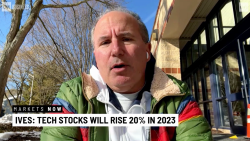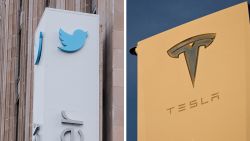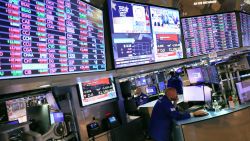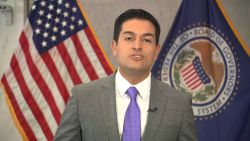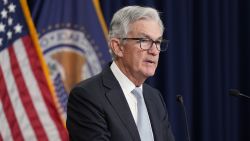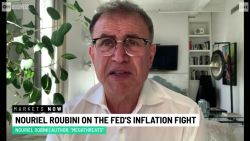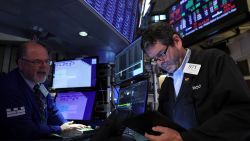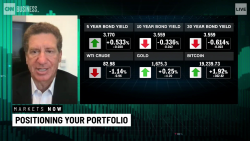The only place more chaotic than Washington right now seems to be Wall Street.
But what exactly are investors so worried about? Fundamental economic indicators like unemployment and consumer spending are still very strong.
At least part of the answer lies in two words: Debt ceiling. The standoff over a border wall that caused a partial government shutdown, which has no end in sight, is a bad omen for lawmakers’ capacity to strike a deal on extending government borrowing, a financial issue that has much farther-reaching effects.
Sometime in the second half of 2019, the Treasury Department will lose the ability to borrow if Congress and President Donald Trump can’t agree on how to get around the cap.
The current suspension of the debt ceiling, which was quietly agreed to last year, will expire on March 1. But the Treasury will be able to cover its bills at least into mid-summer by moving money around — a series of maneuvers formally designated “extraordinary measures.”
Federal borrowing is no small matter, especially since the federal government is expected to spend about $1 trillion more this year than it will bring in. It must borrow to make up the difference and make good on all of its obligations to federal contractors, working Americans, investors, other nations and countless other creditors.
US government debt is considered the safest in the world, because the United States has never reneged on its debts. A default could have devastating consequences, from driving borrowing costs sky high to jeopardizing the dollar’s status as the world’s reserve currency. The mere risk of a debt ceiling crisis can unsettle markets. The only way out is for Congress to come to an agreement with Trump, at a time when neither side seems interested in compromise.
“The government shutdown in and of itself doesn’t have massive economic impact,” says David Lafferty, chief market strategist at Natixis Investment Managers. “But I think it is symbolic of the relationship the president is going to have with Congress. And most people believe that the government shutdown was the easier hurdle to get over relative to the debt ceiling.”
Markets really care about the debt ceiling. In 2011, protracted negotiations around the debt ceiling led ratings agencies to downgrade US credit, sending major indices into free fall. The S&P 500 fell about 17% from late July to early August that year, and didn’t regain its footing until well into 2012.
A brief from the Treasury Department in 2013 blamed the brinksmanship for putting a dent in America’s fragile recovery from the Great Recession.
Even though most Americans don’t own stocks, tanking equity prices can hamper investment and create a negative feedback loop with consumer sentiment that depresses spending. An ominous sign of that downward spiral arrived this past week, when the Conference Board’s consumer confidence index posted its largest drop since July 2015.
Few observers think the US government would actually go so far as to start missing debt payments. In a note published earlier this month, Moody’s Investor Service characterized the prospect of an actual default as “highly unlikely.” The agency dinged a measure of US institutional strength only slightly because of the debt limit debate’s “propensity to add to political discord and weaken the budget-making process.”
But history has been no guide in the Trump era, as the ongoing shutdown illustrates.
“You’ve got a shutdown with nobody negotiating with one another, and no real end in sight,” says Christopher Smart, head of macroeconomic and geopolitical research at the asset manager Barings. “It’s not like ‘Oh, they’ll talk for the next few days, and they’re haggling over how much to spend on border security.’ The markets aren’t seeing anything that leads to progress. And when Congress does reconvene, the Democrats will hold a stronger hand.”
Typically, under divided government, the party that doesn’t hold the White House uses its leverage over the debt ceiling to extract concessions from the President.
In 2011 and 2013, Congressional Republicans demanded deficit reductions that led to sharp cuts in agency budgets before they would vote to authorize more borrowing authority. This time, Democrats could use it to demand a permanent fix for the Deferred Action for Childhood Arrivals program, or to get Republican approval for a sweeping ethics bill, or to save the Affordable Care Act.
But Trump’s chief of staff is Mick Mulvaney — who, as an anti-deficit congressman was one of those threatening to drive the US economy off a cliff rather than let Treasury borrow more money during the Obama administration.
Worries about the unpredictability of Trump and his top aides have only been exacerbated by events of the past two weeks, which have seen the sudden and pointed resignation of Defense Secretary James Mattis, Treasury Secretary Steven Mnuchin’s awkwardly publicized call to bank CEOs to reassure investors about market liquidity when they weren’t worried in the first place, and another round of Trump’s repeated broadsides against Federal Reserve Chairman Jay Powell for continuing to raise interest rates.
Even though many investors would also much prefer to keep interest rates low as well, they worry that upbraiding Powell will have the opposite effect.
“Similar to prior extreme non-recession market events, the Fed needs to convey a clear message they are done raising rates,” wrote analysts from Canaccord Genuity in a note to clients last Wednesday. “Our fear is the President’s open criticism has politicized the Fed decision, making it tougher to do what is necessary.”



